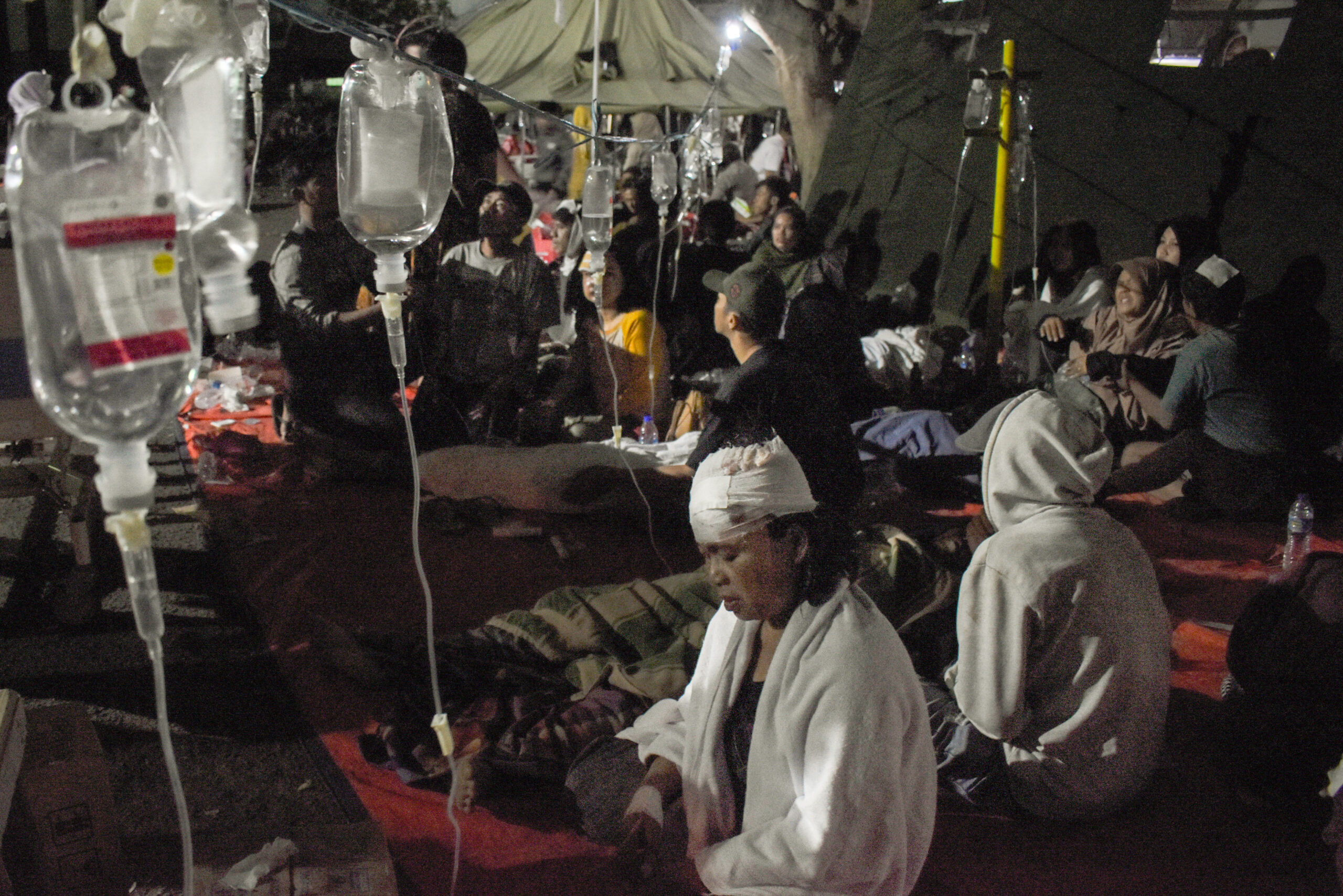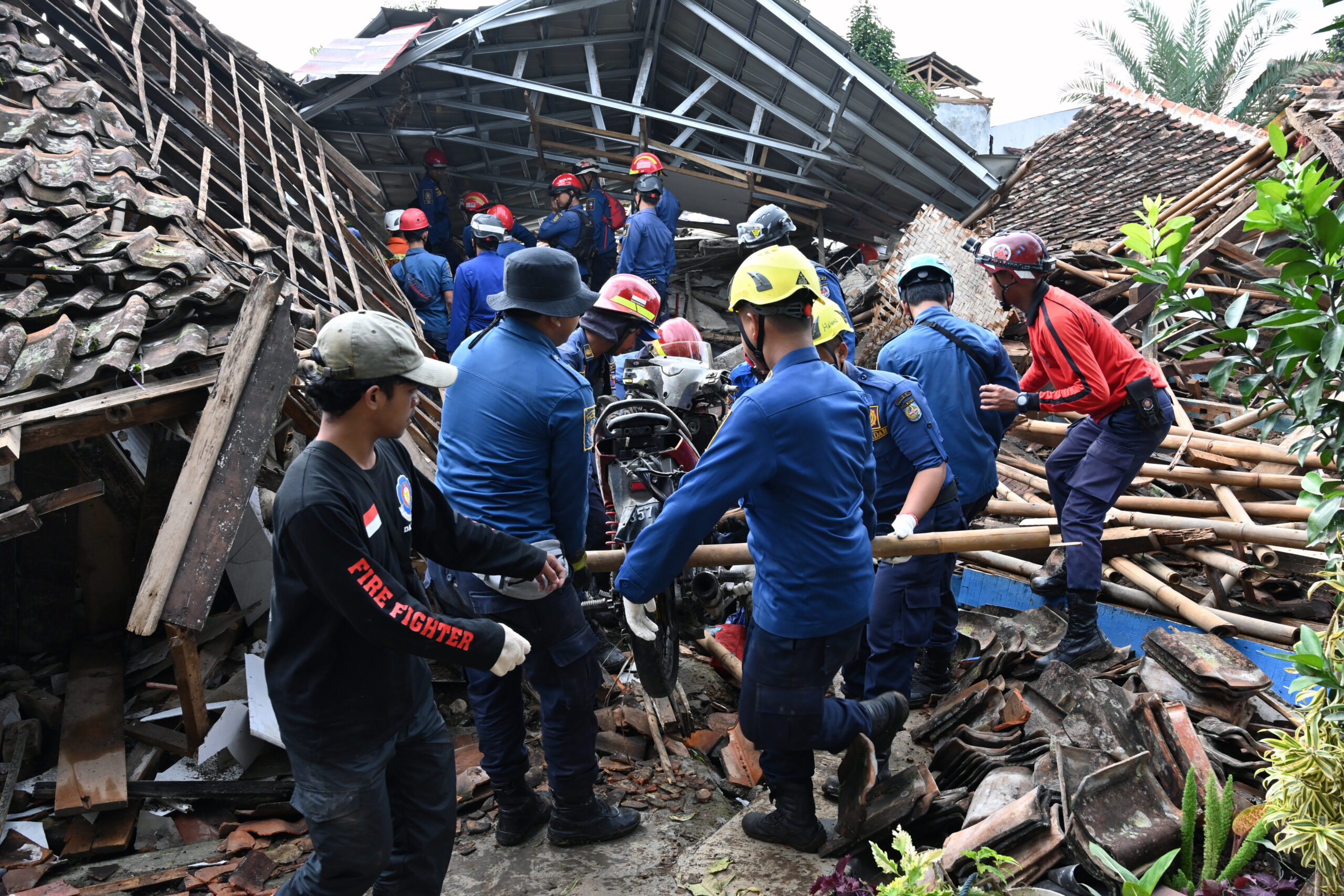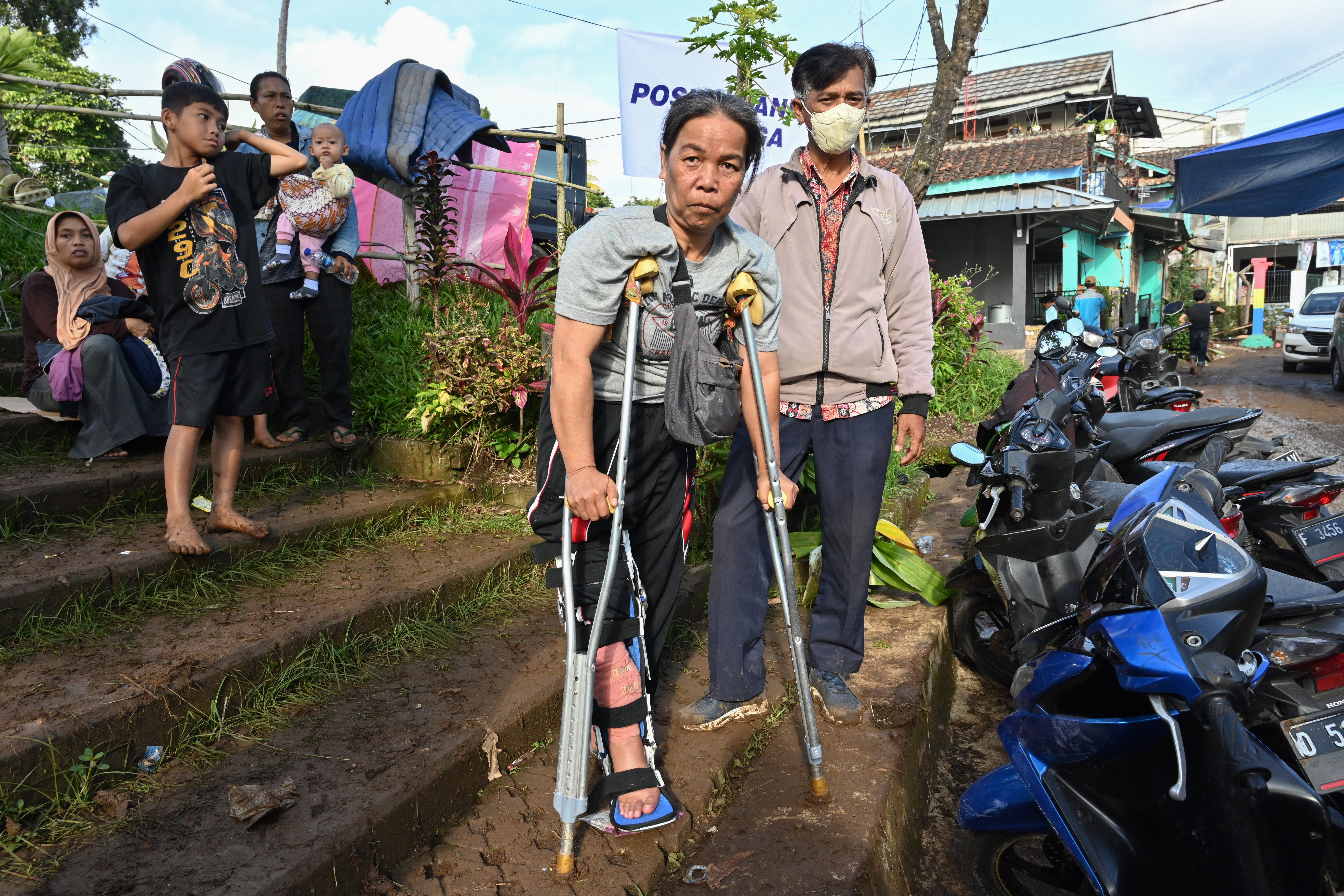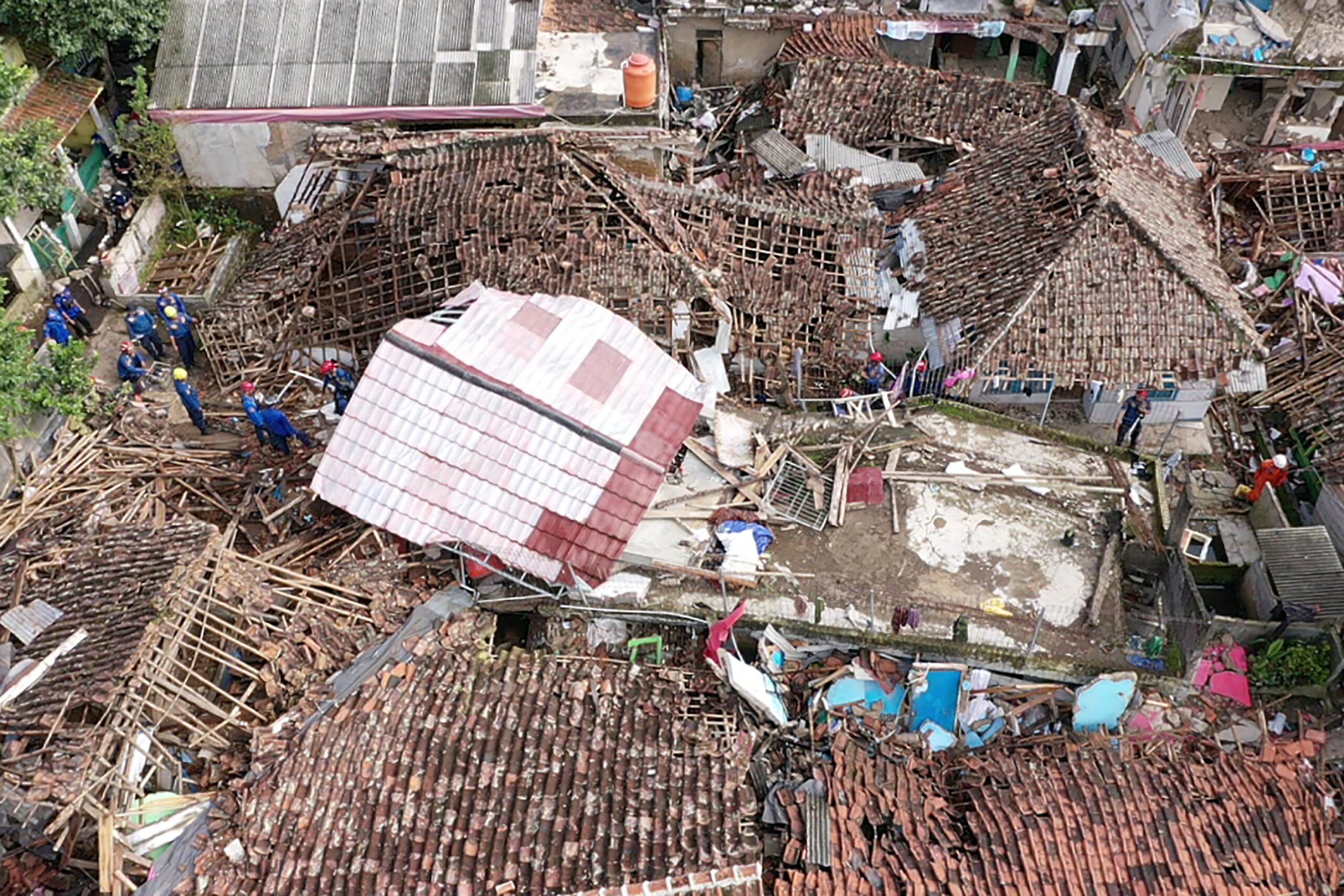A deep tremor shook the Indonesian city of Cianjur in West Java, toppling buildings and leaving local residents seriously injured or dead on November 21. The 5.6 magnitude earthquake, caused by tectonic activities of the Cugenang Fault, devastated the area.
As of 20 December, the death toll has risen to 635. The earthquake has also displaced over 100,000 people and destroyed critical public infrastructure, creating instability across the affected areas.
Experts warn that Indonesia could see an increase in deadly earthquakes over the next few years, and that preparation is key. In response, the Indonesian government has pledged to invest heavily in disaster-risk prevention and mitigation, aiming to reduce the impact of future earthquakes and other disasters. But many locals are wondering why it took so long.
“During the first day, there were limited ambulances to help mobilise injured victims,” said Taufik Anugrah, head of Gabungan Relawan Cianjur Group, a local disaster relief group consisting of 30 volunteers. “But then we receive reinforcements from [neighbouring cities] like Sukabumi, Bogor, and Bandung.”
The emergency rooms are packed, and the hospitals have to prepare a makeshift tent in the parking area”
Taufik Anugrah, head of Gabungan Relawan Cianjur Group
Anugrah has been on the ground since day one of the crisis, aiding communities and government agencies with evacuations of those who are injured. His group is now focusing their efforts in managing three camps and running a public kitchen and medical team. “Every day, we prepare 150 to 200 portions of food, and our medical team also visits the refugee camps to help those who are sick and injured,” he said.
The Indonesian government has declared a state of emergency in the affected area and is providing aid and assistance to those affected. In response to the quake, the Indonesian National Disaster Mitigation Agency, known locally as BNPB, has deployed hundreds of personnel and equipment to the affected areas working to provide temporary shelter and medical care to those affected, as well as conducting assessments of the damage. The Indonesian Navy also provided an emergency hospital in one of the affected areas.
According to Anugrah, the local general hospitals are currently overwhelmed. “The emergency rooms are packed, and the hospitals have to prepare a makeshift tent in the parking area to accommodate the victims,” he said.

One of the obstacles volunteer groups and responders face is navigating the challenging logistics of delivering aid to hard to reach and heavily affected areas, such as remote villages like Galudra, Sukamulya, and Baru Kaso.
“The government had to utilise helicopters to reach affected areas that lie on higher ground,” Anugrah said. He recounted that the overwhelming effects of the earthquake has pushed for collaboration between both government and private sector response groups to speed up the time-sensitive evacuation process.
In the aftermath of the disaster, the challenge of providing adequate housing, food and basic necessities for those affected and displaced reflects the insufficient emergency response resources, according to Anugrah.
One of the victims of the Cianjur earthquake, 23-year-old Akhsan Nurcholish, a student at Universitas Suryakencana, was in the middle of recording a lecture from his mobile phone when disaster struck. His video, which has been widely circulated on social media, shows a class full of 30 university students before the building started crumbling around them.
“My friends and I immediately left the classroom to exit the building, Nurcholish said. “Later, we went back to evacuate our friends who were stuck or injured.”
Following the earthquake, he found his home damaged, with cracks on the walls and damage to the roof. He and his family decided to stay in a refugee camp until the residential area was cleared of threats of following aftershocks. Nurcholish said that although he feels that the disaster response was adequate, there are still infrastructure challenges throughout the affected area.
“There are areas which are hard to access by the government. On the fourth day, the Cugenang area has yet to receive aid at all, because of how hard it is to access the area,” he said. “Only after a team of volunteers from Bandung found the location and shared it in social media, the aid started to come in.”
He added that the condition of the roads in Cugenang made it hard for response teams to reach the area.
Indonesia is a country that is particularly vulnerable to natural disasters.”
Yono Reksoprodjo, official, KKIP
On December 9, in an effort to aid communities, Letjen TNI Suharyanto, the head of the BNPB, handed over stimulant funds for local residents who were affected to help them survive and rebuild. Volunteers, government officials, and community members have also started action to rebuild schools and mosques that were damaged in the earthquake.
Yono Reksoprodjo, an official at Indonesia’s KKIP, the policy bureau for the defence industry, and former professional steering committee member to the BNPB, believes that the Indonesian government still needs to do more.
“Indonesia is a country that is particularly vulnerable to natural disasters. Located in the ‘Pacific Ring of Fire,’ it is prone to earthquakes, volcanic eruptions, and tsunamis,” he said. To add to that, the high volume of residents already living in disaster-prone areas makes the challenge not only cultural, but also economical in disaster mitigation and response in Indonesia.”
Reksoprodjo added that the government’s priority should be public education, especially in disaster-prone areas. “Routine disaster simulation will help increase awareness. The readiness of facilities and infrastructure also has to be fulfilled and exercised, as well,” he explained.
As the world’s fourth most populous country, with 60% of its population residing on the island of Java, Reksoprodjo believes disaster preparedness should be the government’s priority. Another key aspect of Indonesia’s efforts is the promotion of community-based disaster management by national and regional government agencies.

In a study prepared by APDC and UNDRR, improvements have been made in developing a comprehensive risk financing system, including the On-call Fund, or a contingency funding mechanism for financing national level events. Although the Indonesian National Disaster Mitigation Agency has prepared a disaster map, further challenges are posed.
“Regional agencies also play a significant part in educating local communities of the dangers of natural disasters,” Reksoprodjo said.
However, the availability of manpower to provide guidance and education, often coupled with budget limitations, is a persisting challenge faced in establishing community-based disaster preparedness systems.
In recent years, Indonesia has taken steps to improve its disaster preparedness and resiliency. One of the key strategies used by the BNPB is the development of early warning systems. These systems use a combination of sensors, satellite data, and computer modelling to monitor potential hazards and alert communities in advance of an impending disaster.

The planned new Indonesian capital, Nusantara, which is slated to be inaugurated in 2024, takes seismic activities and disaster probabilities into account. According to a dossier prepared by the National Development Planning Agency (Bappenas), among the reasons why the capital city will be relocated are environmental concerns. Some include annual flooding, continuous decrease of ground level, possible tsunamis, and finally, threat of earthquakes.
About a month after the earthquake, Nurcholish returned with his family to their home. Government and volunteers are starting to rebuild important infrastructure and life continues to pick back up in Cianjur.
Yet as a resident of an area prone to earthquakes, Nurcholish is frustrated that he never received information about the risks that came with living in Cianjur. “Before the earthquake, there was no socialisation of the risk. I didn’t know that there was a possibility of an earthquake [in the area],” he said.
As Indonesia looks to the future with a plan of moving the capital to a safer zone, there are many other areas across the Indonesian archipelago that still need adequate preparation and disaster mitigation systems.
“This is the first time a large quake struck Cianjur,” Nurcholish said. “I hope in the future, the government will provide education and raise awareness so that the communities can remain alert.”


